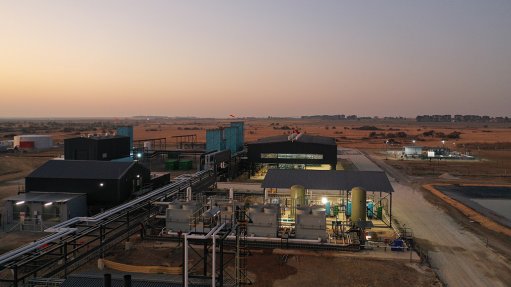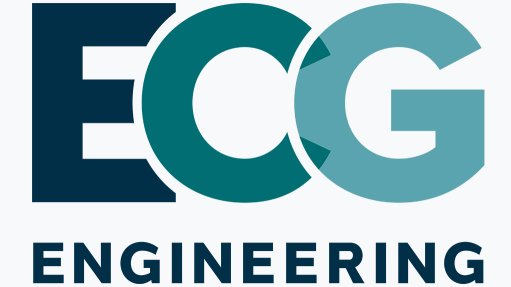Infrastructure repair can support large-scale industrialisation, says Seifsa
Infrastructure investment can unlock demand for the metals and engineering (M&E) sector, which has markets in the mining, agriculture, construction, automotive, logistics, water and the energy supply industry.
Infrastructure development is paramount to unlocking growth in South Africa and Africa, says industry organisation Steel and Engineering Industries Federation of Southern Africa (Seifsa) COO Tafadzwa Chibanguza.
"A large-scale industrialisation project can be achieved through repairing the existing infrastructure that has continued to deteriorate owing to under-investment and maintenance backlogs. This is a reality across most critical infrastructure areas, namely rail, energy, municipal services and, increasingly worryingly, water infrastructure," he adds.
Infrastructure bottlenecks have led to South Africa's poor economic growth, but companies also face challenges as a result of the infrastructure decay.
Further, the South African Reserve Bank has consistently highlighted its concern about the pace of increases in administered prices and their impact on general inflation.
"The administered price trajectory is largely a function of inefficiencies in infrastructure. The administered price inflation so far during 2024 was 8.02% while consumer price inflation was 5.2% over the same period," says Chibanguza.
"Importantly, about 35% to 40% of costs for companies in the M&E sector are attributable to administered prices. This highlights the pressure that these administered prices contribute to input costs," he notes.
INDUSTRIALISATION FRAMEWORK
The need to fix infrastructure represents the demand side of the industrialisation framework, he adds.
For example, a slight increase in economic growth will put pressure on the available electricity capacity and either choke the growth or tip the country back into loadshedding.
"Hence, there is an urgent need to expand the transmission and distribution network while concurrently adding additional generation capacity," he points out.
Similarly, in logistics, expanding the rail network and fixing port operations is required to enhance economic efficiency and connectivity.
"Water infrastructure requires the most urgent attention on water treatment facilities and pipeline repairs," he emphasises.
"All of these investments amount to billions of rands and present an immediate offtake, demand-wise, for industry."
Meanwhile, on the supply side of the industrialisation framework, the M&E sector comprises companies that supply products that are required in all these areas such as: transformers of all categories, transmissions lines, the supporting towers, equipment and instrumentation for substations, circuit breakers, capacitators and reactors for the electricity transmission network.
For logistics, rails, which are made of steel, locomotives, rail joints, signalling equipment, overhead wires and various pieces of port equipment including tug boats can all be supplied locally, highlights Chibanguza.
"For water infrastructure, valves of all types and sizes and steel pipes are manufactured and supplied from this sector," he adds.
Additionally, at an aggregated sectoral level, capacity in the sector is underused, recording 70% capacity use so far in 2024.
However, the electrical cable manufacturing industry, which is a sub-industry of the M&E sector, had a volume-adjusted capacity utilisation rate of 42%.
"This situation should not be allowed to persist because, at these capacity levels, factories are not sustainable," he says.
The M&E sector's production contracted by an average yearly rate of 1.2% a year over the past 15 years and employment in the M&E sector has contracted by an average yearly rate of 1.4% a year over the past 15 years. These are partly attributable to low demand and capacity utilisation levels.
In this industrialisation framework, companies in the M&E sector can quite easily increase production to meet demand with minimal investment required, notes Chibanguza.
FUNDING
The historic under-investment and maintenance backlog, which runs into billions of rands, and the urgency to resolve bottlenecks requires that an urgent solution be found, but the current state of the public purse does not allow for this.
"Therefore, it is crucial that the State look to crowd-in private sector investment, capability and capacity," he avers.
The reforms being considered by National Treasury in terms of public-private partnerships (PPP) in the funding of public-sector projects must be fast-tracked, he adds.
"The intersection of the three aspects of the industrialisation framework, namely the urgent demand that needs to be met, the under-utilised supply capacity and the funding options under the PPP framework, present a sweet-spot for a large-scale, and immediate, industrialisation programme.
"Fixing the existing infrastructure base not only resolves the immediate pressing problems, but will make the country an attractive destination for even more long-term infrastructure investment, thereby creating a virtuous industrialisation cycle," Chibanguza says.
Article Enquiry
Email Article
Save Article
Feedback
To advertise email advertising@creamermedia.co.za or click here
Comments
Press Office
Announcements
What's On
Subscribe to improve your user experience...
Option 1 (equivalent of R125 a month):
Receive a weekly copy of Creamer Media's Engineering News & Mining Weekly magazine
(print copy for those in South Africa and e-magazine for those outside of South Africa)
Receive daily email newsletters
Access to full search results
Access archive of magazine back copies
Access to Projects in Progress
Access to ONE Research Report of your choice in PDF format
Option 2 (equivalent of R375 a month):
All benefits from Option 1
PLUS
Access to Creamer Media's Research Channel Africa for ALL Research Reports, in PDF format, on various industrial and mining sectors
including Electricity; Water; Energy Transition; Hydrogen; Roads, Rail and Ports; Coal; Gold; Platinum; Battery Metals; etc.
Already a subscriber?
Forgotten your password?
Receive weekly copy of Creamer Media's Engineering News & Mining Weekly magazine (print copy for those in South Africa and e-magazine for those outside of South Africa)
➕
Recieve daily email newsletters
➕
Access to full search results
➕
Access archive of magazine back copies
➕
Access to Projects in Progress
➕
Access to ONE Research Report of your choice in PDF format
RESEARCH CHANNEL AFRICA
R4500 (equivalent of R375 a month)
SUBSCRIBEAll benefits from Option 1
➕
Access to Creamer Media's Research Channel Africa for ALL Research Reports on various industrial and mining sectors, in PDF format, including on:
Electricity
➕
Water
➕
Energy Transition
➕
Hydrogen
➕
Roads, Rail and Ports
➕
Coal
➕
Gold
➕
Platinum
➕
Battery Metals
➕
etc.
Receive all benefits from Option 1 or Option 2 delivered to numerous people at your company
➕
Multiple User names and Passwords for simultaneous log-ins
➕
Intranet integration access to all in your organisation
















